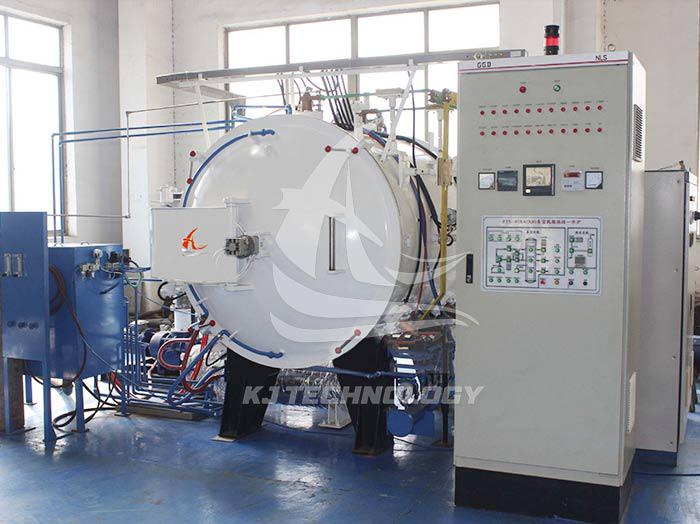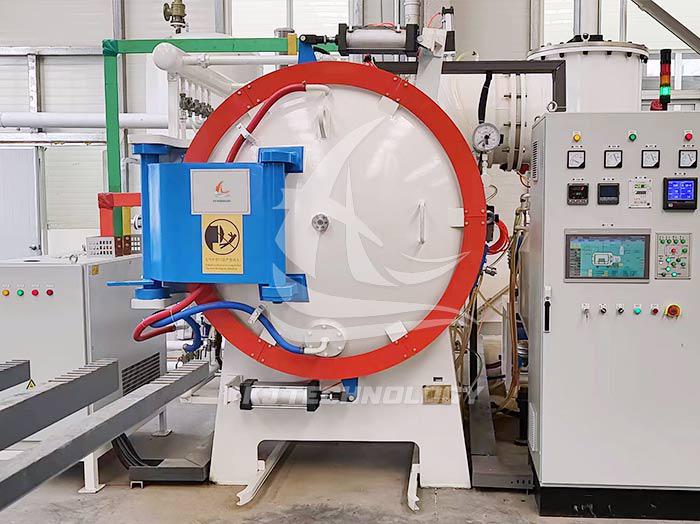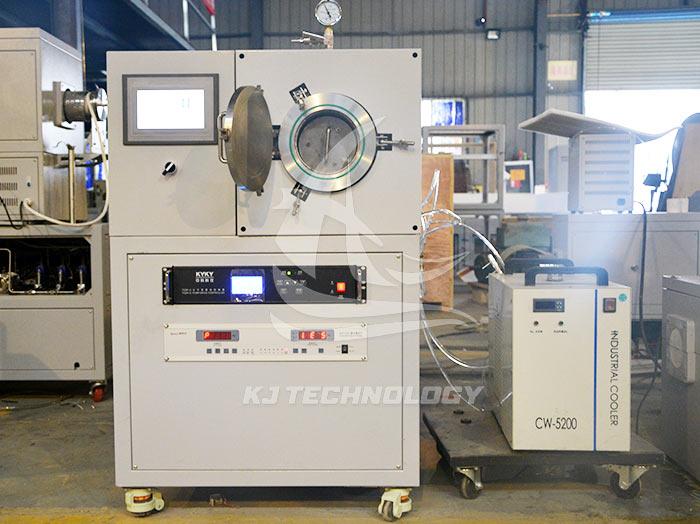Can vacuum heat treatment furnaces be used for brazing?
 05-19-2025 Author: KJ technology
05-19-2025 Author: KJ technology
Vacuum heat treatment furnaces can be used for brazing and have significant advantages in multiple fields. The following is a specific analysis:
1. Application advantages
Reduce oxidation pollution: By using a vacuum pump to extract air from the furnace, a high vacuum degree is achieved, effectively reducing the oxidation and pollution of metal materials during brazing and improving welding quality. For example, in the aerospace field, when connecting high-precision materials such as titanium alloys and stainless steel, the strength and sealing of the connecting parts can be ensured.
Improving welding strength: In a vacuum environment, the diffusion and bonding between the brazing material and the base material are more complete, which can significantly improve the welding strength.
Enhanced adaptability: Suitable for connecting various metal materials, including aluminum, cast iron, stainless steel, steel, titanium alloy, nickel alloy, and cobalt based superalloys, and can be successfully brazed without using any flux.
Ensure component cleanliness: Correctly processed components should be kept clean and shiny when taken out of the furnace, and often do not require further processing.
2. Application Fields
Aerospace field: used for manufacturing aircraft and spacecraft structural components and parts, such as engine components, turbine blades, heat exchangers, fuel nozzles and other key components, to ensure the strength and airtightness of welded joints and improve the safety performance of aircraft.
Automotive industry: To achieve high-precision and high-quality welding of automotive engines, transmissions, and other components, improve the performance and safety of automobiles, commonly used in the manufacturing of exhaust systems, turbochargers, heat exchangers, engine cylinder blocks, and other components.
Electronic industry: used for manufacturing high-precision electronic components such as circuit boards, connectors, and semiconductor devices, ensuring the stability and reliability of solder joints, improving the performance and lifespan of electronic products, and achieving reliable connections of complex materials such as ceramic metal and metal metal in the field of electronic packaging.
Medical device industry: It can be used to manufacture surgical knives, dental tools, and implants that require high-precision and high-strength connections, ensuring the strength and corrosion resistance of welding joints, and improving the overall quality and safety of medical devices.
Energy sector: used for manufacturing nuclear reactor components, solar collectors, fuel cells, etc.
Chemical and petrochemical industries: used for welding equipment such as pipelines, valves, heat exchangers, etc.
Precision machinery and instrument manufacturing: used for welding high-precision components such as sensors, measuring instruments, etc.
3. Technical features
Brazable complex components: Complex and dense components with blind holes can be brazed, but it is almost impossible to brazed and thoroughly clean such components using atmosphere brazing methods.
Removing obstructive gases: Vacuum furnaces operating at high vacuum levels can effectively remove all gases that may hinder the flow of brazing alloys, prevent the formation of difficult to remove oxide films, and promote the wetting and flow of brazing alloys on vacuum treated surfaces.
Partition temperature control: For example, for brazing aluminum components, depending on the alloy type, the components are heated to 575 ° C-590 ° C. Temperature uniformity is very important, with a typical value of ± 5.5 ° C or higher. Partition temperature control furnaces are usually used, and the process cycle is related to the furnace type, component structure, and component clamping method.
Multi stage processing: For brazing of nickel based alloys, it is usually carried out under a vacuum degree of 10 ⁻³ -10 ⁻⁵ pallets, without any partial pressure conditions. Generally, it is necessary to preheat to 920 ° C-980 ° C and maintain it for a certain period of time to ensure uniform heating of large workpieces. After brazing, additional solid solution or hardening heat treatment can be carried out by reducing the furnace temperature before gas cooling and discharging.








